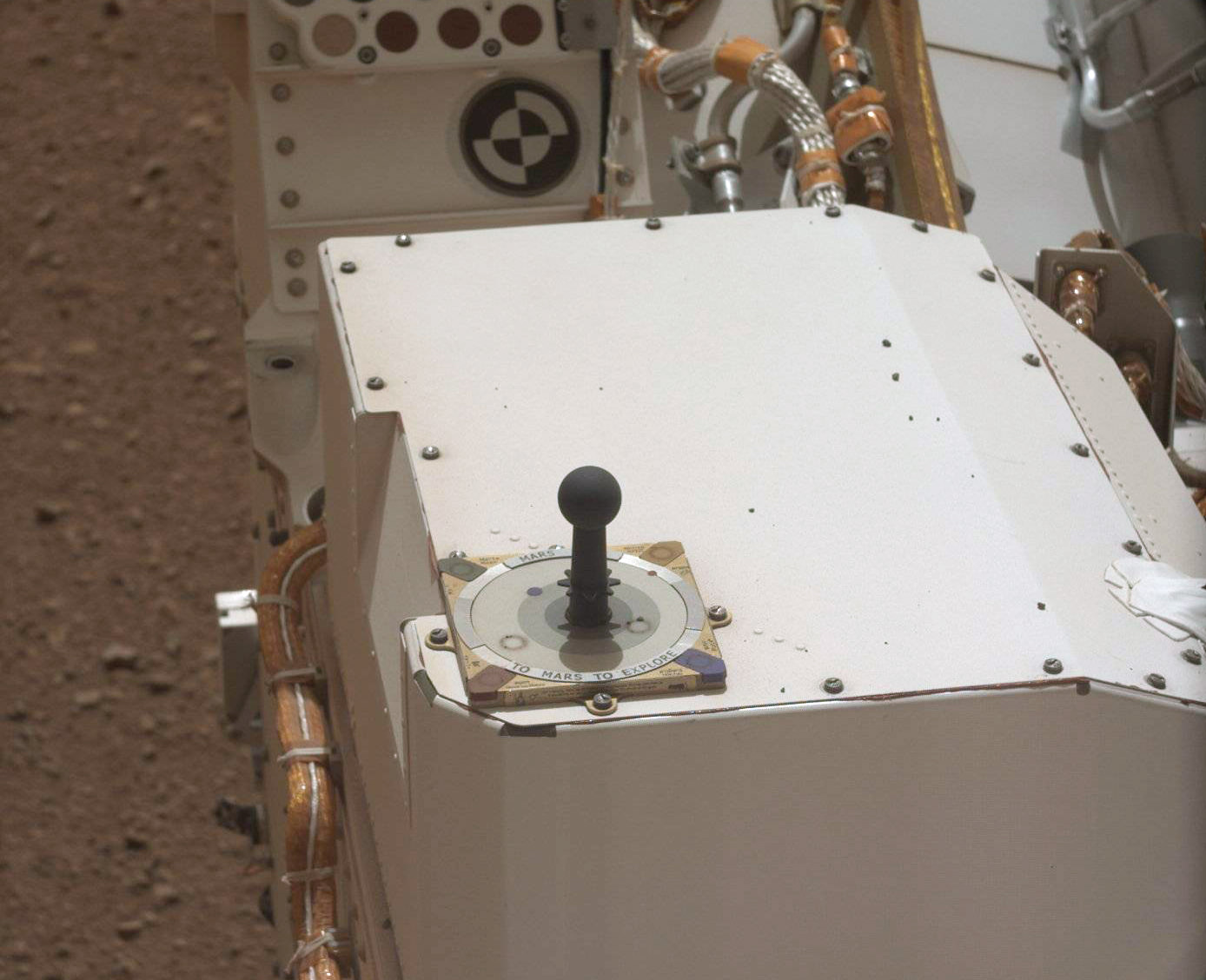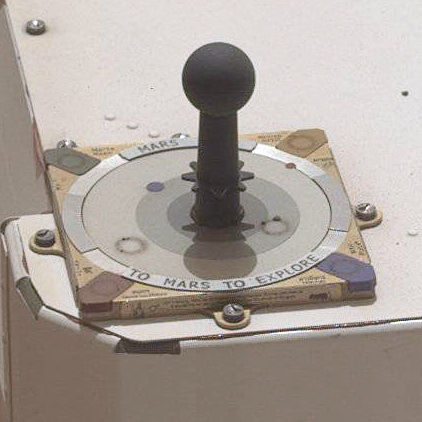A recent high-definition image from Curiosity’s Mastcam shows the rover’s sundial (NASA/JPL-Caltech)
While Curiosity is definitely loaded up with some of the most high-tech instruments ever made to investigate the surface of Mars, it also carries a very low-tech instrument: a sundial (aka the “MarsDial”) which can be used to determine the position of the Sun in the sky and the season on Mars just like they do here on Earth. Curiosity’s sundial also has additional color calibration tools for the rover’s Mastcam, which captured the image above on August 19 — the 13th “Sol” of the mission.
The connection between a device invented by people thousands of years ago being in use today on a robotic explorer on another planet didn’t go unnoticed by the Mars Exploration Rover team either; in addition to the words “Mars 2012” and “To Mars, To Explore” around its top bezel, Curiosity’s sundial also carries a message of history, hope and inspiration printed along its edges…
Along with line drawings and the word for “Mars” in sixteen languages, Curiosity’s sundial bears the following inscription:
“For millennia, Mars has stimulated our imaginations. First, we saw Mars as a wandering star, a bringer of war from the abode of the gods. In recent centuries, the planet’s changing appearance in telescopes caused us to think that Mars had a climate like the Earth’s. Our first space age views revealed only a cratered, Moon-like world, but later missions showed that Mars once had abundant liquid water. Through it all, we have wondered: Has there been life on Mars? To those taking the next steps to find out, we wish a safe journey and the joy of discovery.”
Curiosity’s successful landing on Mars at 10:31 p.m. on August 5, 2012 (PDT) was only the first (although very exciting!) step of its mission, and the first of hopefully many next steps to explore our neighboring world. Perhaps one day this message will be revisited by human explorers on Mars who may then reflect back on how it all began, and all of the innovations, hope and — well, curiosity — that made each of their rust-dusted steps possible.
Follow the sun, Curiosity!
Find out more about Curiosity’s many science and exploration instruments on JPL’s interactive 3D page here, and keep up with the latest MSL downloaded images here.


